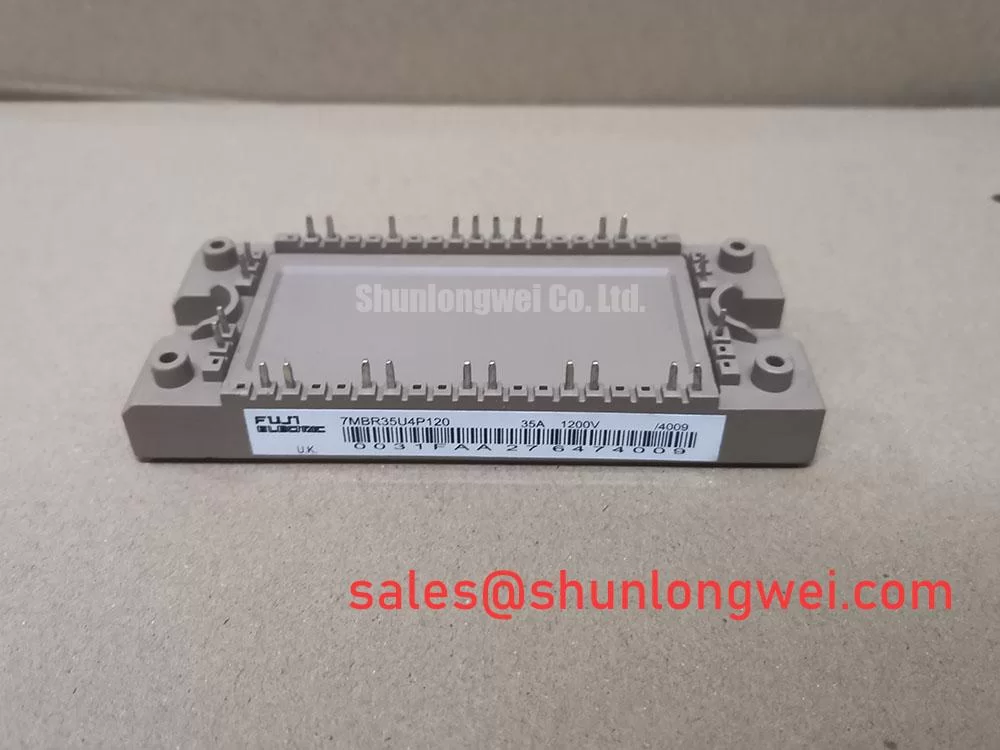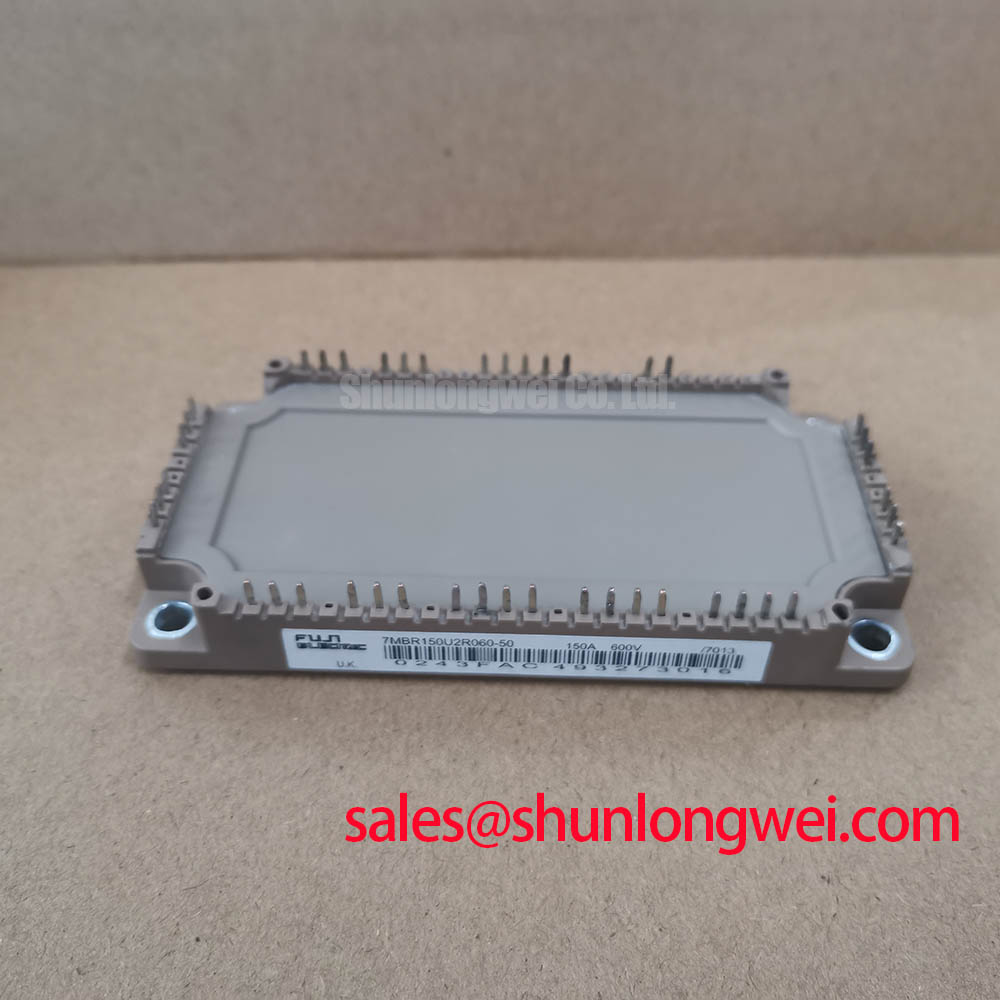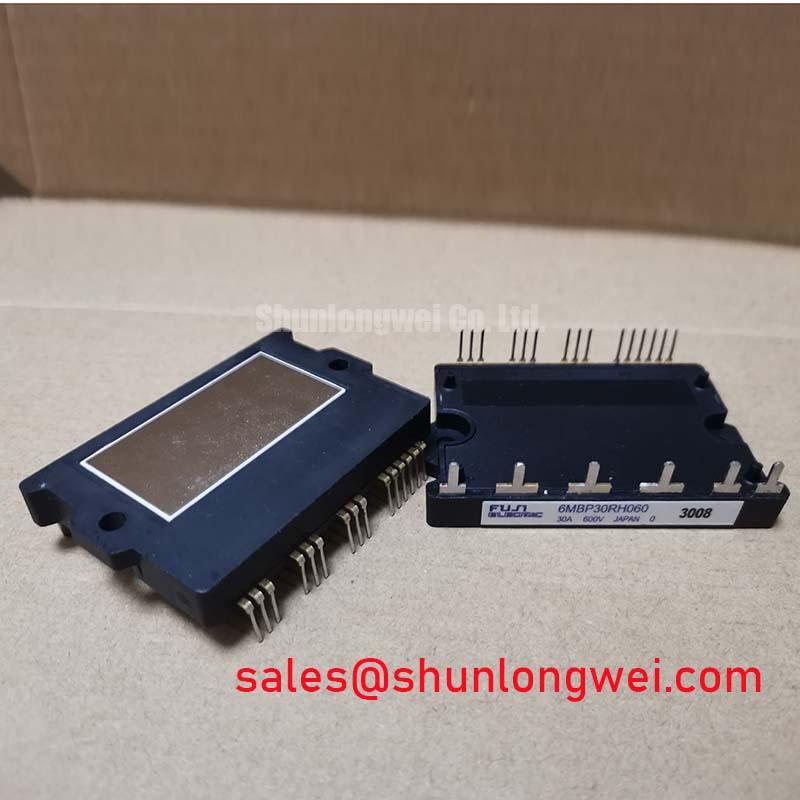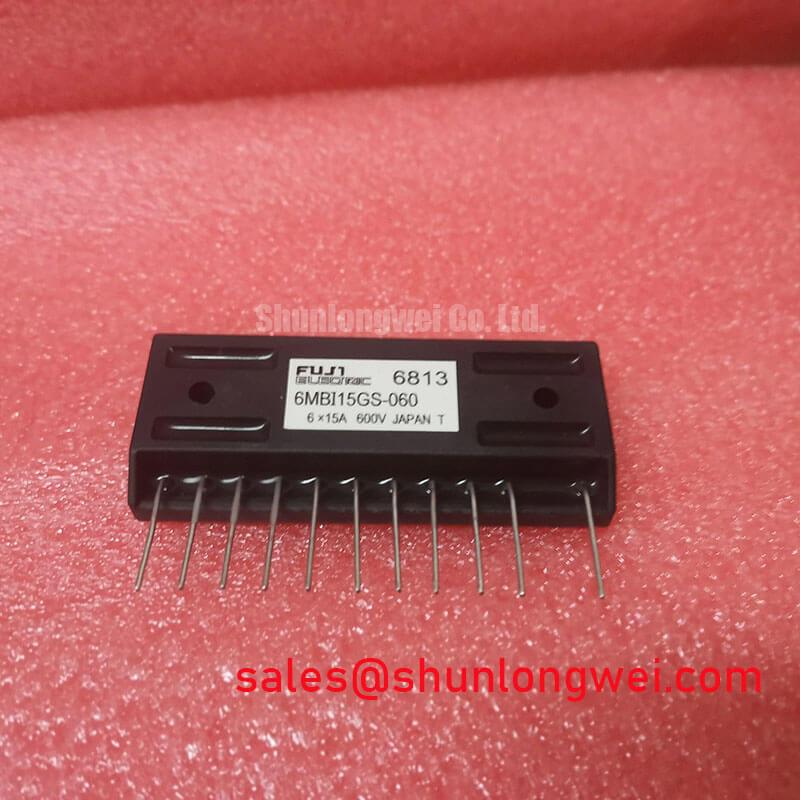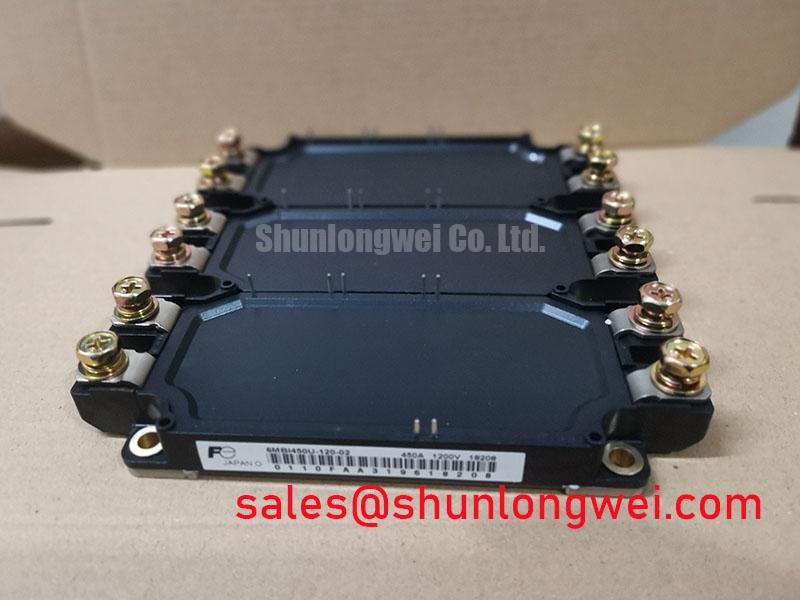Content last revised on November 18, 2025
7MBR35U4P120-50 | Fuji 1200V 35A PIM IGBT Module | Engineering Review
An Integrated Power Stage for Compact, Thermally-Aware Motor Drives
The Fuji Electric 7MBR35U4P120-50 is a highly integrated Power Integrated Module (PIM) that accelerates the design of compact motor drives by combining a complete three-phase power stage with built-in thermal sensing for enhanced system reliability. Featuring a robust 7-in-1 topology, this module delivers 1200V blocking voltage and a 35A continuous collector current, streamlining both the design and assembly process. This integration simplifies system architecture compared to discrete component solutions, directly addressing the need for smaller and more reliable power conversion systems. For low to medium-power motor drives where board space and thermal management are critical design constraints, the 7MBR35U4P120-50 offers a compelling, all-in-one solution.
Key Parameter Overview
Decoding the Specs for Efficient and Reliable System Design
The technical specifications of the 7MBR35U4P120-50 are tailored for balanced performance in variable speed drive applications. The parameters below highlight its capability to manage demanding electrical and thermal loads within a compact footprint.
| Parameter | Symbol | Value | Conditions | Engineering Note |
|---|---|---|---|---|
| Collector-Emitter Voltage | VCES | 1200V | - | Provides substantial voltage margin for 400V/480V AC line applications, enhancing system ruggedness against voltage transients. |
| Continuous Collector Current (Inverter) | IC | 35A | Tc=80°C | Suitable for driving motors in the approximate range of 3.7 to 7.5 kW, depending on operating conditions and cooling efficiency. |
| Collector-Emitter Saturation Voltage | VCE(sat) | 2.2V (typ) | IC=35A, VGE=15V | A key factor in determining conduction losses; this value represents a balance between on-state losses and switching performance for typical PWM frequencies. |
| Turn-on Switching Loss | Eon | 4.0 mJ/pulse | VCC=600V, IC=35A | Critical for calculating thermal load at higher switching frequencies. |
| Turn-off Switching Loss | Eoff | 5.4 mJ/pulse | VCC=600V, IC=35A | Dominates at higher PWM frequencies and must be factored into the heatsink design. |
| Thermal Resistance (Inverter IGBT) | Rth(j-c) | 0.70 °C/W | Per device | Represents the efficiency of heat transfer from the IGBT junction to the case. A lower value simplifies thermal management. |
| Built-in NTC Thermistor | R25 | 5.0 kΩ | Tc=25°C | Allows for direct monitoring of the module's temperature for implementing crucial over-temperature protection. |
Application Scenarios & Value
System-Level Benefits in Compact Motor Control Systems
The 7MBR35U4P120-50 is engineered for applications where space, assembly cost, and reliability are paramount. Its best fit is in low-to-mid power Variable Frequency Drive (VFD) systems, AC servo drives, and general-purpose inverters.
Consider the design of a compact VFD for a 5.5 kW AC induction motor used in a conveyor system. A key engineering challenge is fitting the entire power stage—including the input rectifier, brake chopper, and three-phase inverter—onto a small PCB while ensuring adequate thermal dissipation. Using discrete components would require numerous individual devices, complex gate drive layouts, and a larger heatsink. The 7MBR35U4P120-50's 7-in-1 Power Integrated Module (PIM) architecture solves this directly. It consolidates all seven power switches and diodes into a single, thermally optimized package. This integration dramatically reduces the component count and simplifies the PCB layout, shrinking the overall drive dimensions and cutting down on assembly time. The result is a faster design cycle and a more compact, cost-effective, and reliable final product. For systems requiring slightly higher power handling, the related 7MBR50U4P120-50 offers a similar integrated solution with a 50A current rating.
Technical Deep Dive
Leveraging Integrated Features for Enhanced Reliability
A standout feature of the 7MBR35U4P120-50 is its integrated NTC thermistor. This is not merely a convenience; it is a fundamental tool for implementing robust thermal protection. The thermistor provides a real-time analog of the module's baseplate temperature, allowing the drive's microcontroller to accurately track thermal stress. This data can be used to trigger alarms, reduce the Pulse Width Modulation (PWM) frequency, or initiate a safe shutdown before a catastrophic thermal runaway event occurs.
This direct temperature feedback loop is critical for maximizing the module's lifespan. The thermal resistance, Rth(j-c), of 0.70 °C/W for the inverter IGBT can be thought of as the "pipe" through which heat escapes the semiconductor junction. The lower this value, the wider the pipe and the more efficiently heat is removed. By actively monitoring temperature with the NTC, the control system can ensure that the heat flow through this thermal path never overwhelms the connected heatsink, maintaining the junction temperature within its safe operating area even under fluctuating load conditions.
Frequently Asked Questions
What is the primary advantage of the 7-in-1 PIM configuration in the 7MBR35U4P120-50?
The primary advantage is system integration. By combining the three-phase rectifier, brake chopper, and three-phase inverter into a single package, it significantly reduces PCB space, simplifies the layout, lowers assembly costs, and minimizes stray inductance compared to a solution built from discrete components.
How does the integrated NTC thermistor contribute to system reliability?
The NTC thermistor provides a direct and accurate measurement of the module's substrate temperature. This enables the implementation of a precise over-temperature protection circuit in the drive's control logic, which can prevent thermal damage and extend the operational life of the entire system.
What does the "U4" in the part number signify?
The "U4" refers to Fuji Electric's 4th generation of trench-gate IGBT technology. This series was developed to provide an optimized balance between conduction losses (VCE(sat)) and switching losses, making it well-suited for motion control applications that operate at typical PWM frequencies of up to 20 kHz.
Is the 7MBR35U4P120-50 suitable for high-frequency switching applications above 20 kHz?
While functional, its performance is optimized for the sub-20 kHz range typical of motor drives. For higher frequencies, the switching losses (Eon and Eoff) would become a dominant source of heat, potentially requiring significant thermal derating or a more advanced cooling solution. A full thermal simulation based on the datasheet's performance curves is essential for such designs.
Strategic Outlook
The trend in power electronics for industrial automation and motion control systems is clear: higher power density, increased reliability, and reduced system cost. Integrated platforms like the 7MBR35U4P120-50 are central to this evolution. By abstracting the complexity of the power stage into a single, pre-validated module, it allows engineering teams to focus their resources on higher-level control strategies and product features. As demands for smarter, smaller, and more efficient motors continue to grow, the value proposition of such highly integrated power modules will only become more critical for achieving competitive and reliable designs.

